
Bass Otis, Commodore Thomas Truxtun, ca. 1817. Oil on canvas. 30 x 25". (Courtesy, Brooklyn Public Library, Center for Brooklyn History, 1974.118.)

Jug showing battle between Constellation and L’Insurgente, Herculaneum Factory, Liverpool, England, ca. 1799–1810. Earthenware and lead glaze. H. 9 7/8". (Courtesy, Winterthur Museum, Gift of S. Robert Teitelman, Roy T. Lefkoe, and Sydney Ann Lefkoe in memory of S. Robert Teitelman, 2009.0023.012.)

Punch bowls, Jingdezhen, decorated in Guangzhou, China, ca. 1795–1799. Hard-paste porcelain.D. of TT bowl (left) 15 3/4", D. of GW bowl (right) 15 7/8". (Naval Historical Foundation, 1949.0036.001, and Mount Vernon Ladies’ Association, W-2662; photo, Gavin Ashworth.)

Side of the TT bowl illustrated in fig. 3, left. (Courtesy, Naval Historical Foundation, 1949.0036.001; photo, Gavin Ashworth.)

Detail of the border of the GW bowl illustrated in fig. 3, right. (Courtesy, Mount Vernon Ladies’ Association, W-2662; photo, Gavin Ashworth.)

Interior of the TT bowl illustrated in fig. 3, left. (Courtesy, Naval Historical Foundation, 1949.0036.001; photo, Gavin Ashworth.)

Interior of the TT bowl illustrated in fig. 3, left. (Courtesy, Naval Historical Foundation, 1949.0036.001; photo, Gavin Ashworth.)

Interior of the GW bowl illustrated in fig. 3, right. (Courtesy, Mount Vernon Ladies’ Association, W-2662; photo, Gavin Ashworth.)
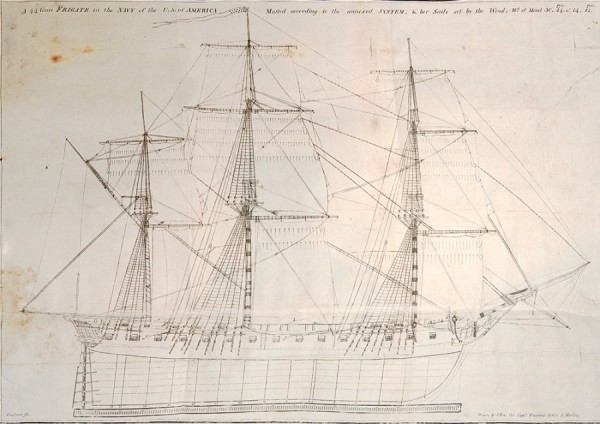
Josiah Fox, “A 44 Gun Frigate in the Navy of the U. S. of America Masted according to the present System,” plate 2 from Remarks, Instructions and Examples Relating to the Latitude and Longitude; Also the Variation of the Compass, etc. etc. etc. (Philadelphia: T. Dobson, 1794). (Courtesy, Navy Department Library, Naval History and Heritage Command; photo, Sierra Medellin.)
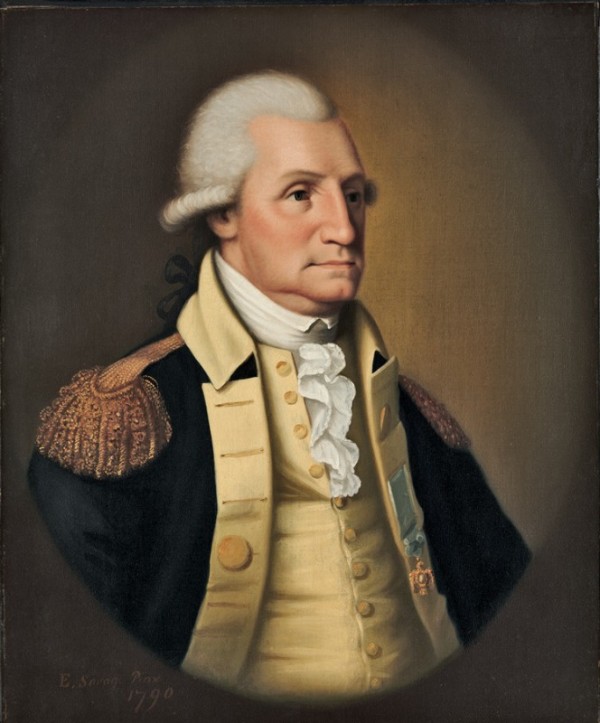
Edward Savage, George Washington (1732–1799), 1790. Oil on canvas, 30 5/16 x 25 3/8". (Harvard University Portrait Collection, Gift of Edward Savage to Harvard College, 1791; photo, © President and Fellows of Harvard College, H49.)

Letter from Timothy Pickering to George Washington, March 4, 1795, listing proposed names for the first frigates. (Library of Congress.)
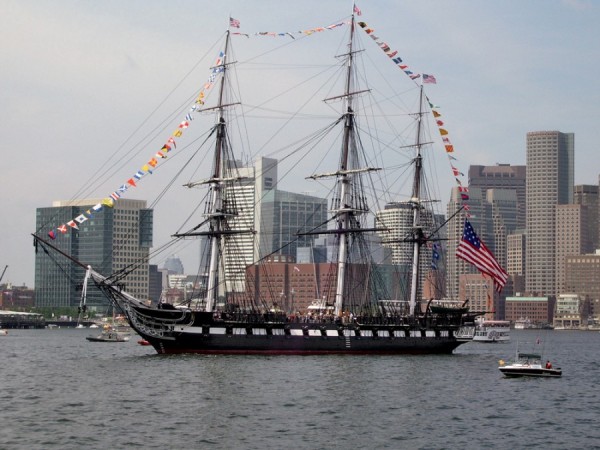
USS Constitution, the oldest commissioned warship afloat, shown on its yearly turnaround cruise in Boston Harbor, July 4, 2011. (Photo, Charles T. Creekman.) This frigate is one of the original six of the U.S. Navy.
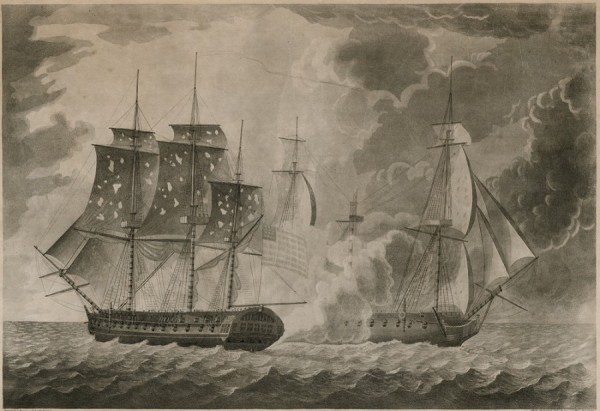
Edward Savage, Action between the Constellation and L’Insurgent on the 9th February 1799, published May 20, 1799. Aquatint; ink on paper. 15 3/4 x 21 15/16". (Courtesy, Mount Vernon Ladies’ Association, M-5855.)
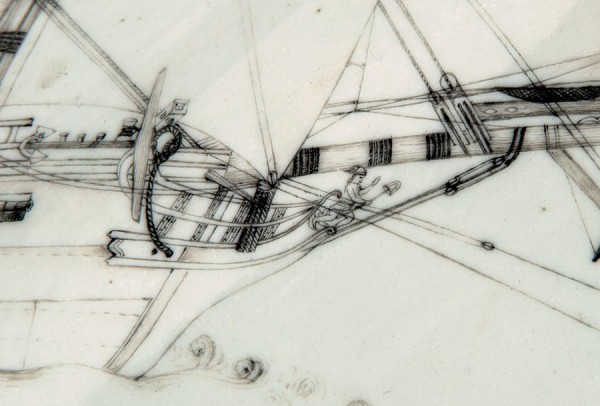
Detail of the figurehead of the ship on the TT bowl illustrated in fig. 3, left. (Courtesy, Naval Historical Foundation, 1949.0036.001; photo, Gavin Ashworth.)
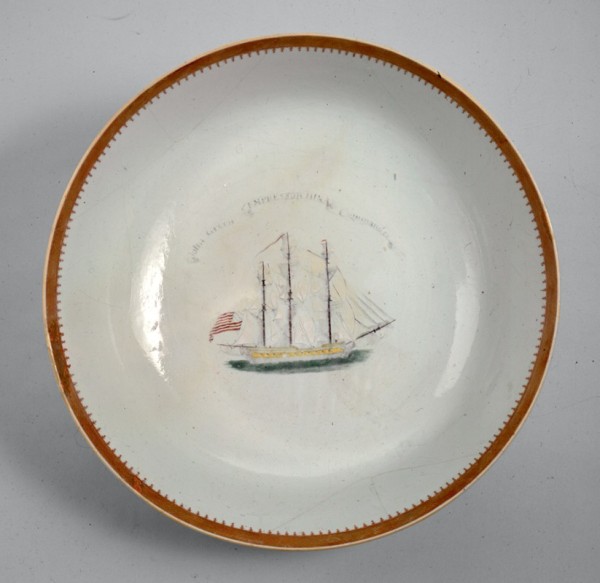
Punch bowl, Jingdezhen, decorated in Guangzhou, China, ca. 1784. Hard-paste porcelain. D. 15 1/4". (Courtesy, New Jersey State Museum, CH1969.244 a, Gift of Mr. Richard V. Lindabury.) Ships decorating the wells of punch bowls were typically more modest, as is this one, in a bowl acquired by Capt. John Green of the Empress of China. The ship design was adapted from the frontispiece of a quarto-sized book, A Treatise of Practical Seamanship, by William Hutchinson (Liverpool, 1777)
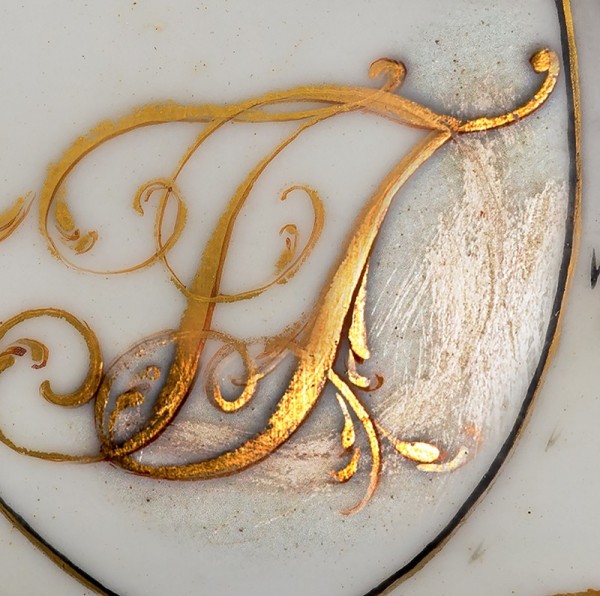
Detail of “TT” with abraded area on the pseudo-armorial of the TT bowl illustrated in fig. 3, left. (Courtesy, Naval Historical Foundation, 1949.0036.001; photo, Gavin Ashworth.)

Microscopic detail of the top serif of the second “T” of the cypher on the TT bowl illustrated in fig. 3, left, showing the area of erasure and the gilt over top. (Courtesy, Naval Historical Foundation, 1949.0036.001; photo, Amanda Isaac and Linda Landry.)

Detail showing the altered “F” of the GW bowl illustrated in fig. 3, right. (Courtesy, Mount Vernon Ladies’ Association, W-2662; photo, Gavin Ashworth.)
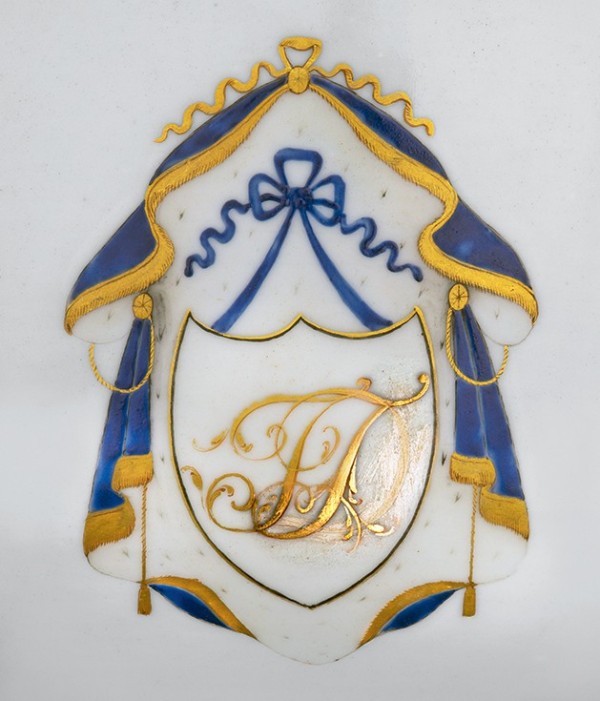
Speculative rendering of the pseudo-armorial of the TT bowl illustrated in fig. 3, left. (Courtesy, Naval Historical Foundation, 1949.0036.001), digitally overlaid with a gilt “D” from a teabowl from another Chinese export porcelain service of ca. 1795. (Detroit Institute of Art, 1930.0307.011; digital photo, Gavin Ashworth.)
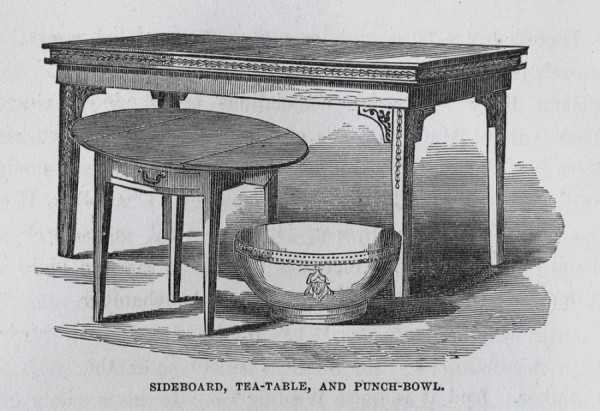
Sideboard, Pembroke tea table, and GW punch bowl. From Benson Lossing, Mount Vernon and Its Associations: Descriptive, Historical, and Pictorial (New York: W. A. Townsend & Co., 1859), p. 303. (Courtesy, Mount Vernon Ladies’ Association.)
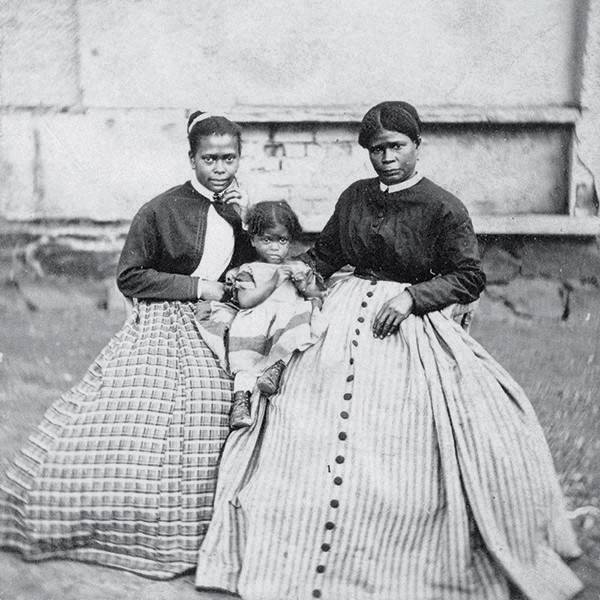
“General Lee’s Slaves, Arlington House,” believed to be Selina Gray at far right with two of
her daughters, ca. 1860s. Stereograph. 3 5/32 x 6 11/16“. (Courtesy, Arlington House, The Robert E. Lee Memorial, National Park Service, ARHO 15585.)
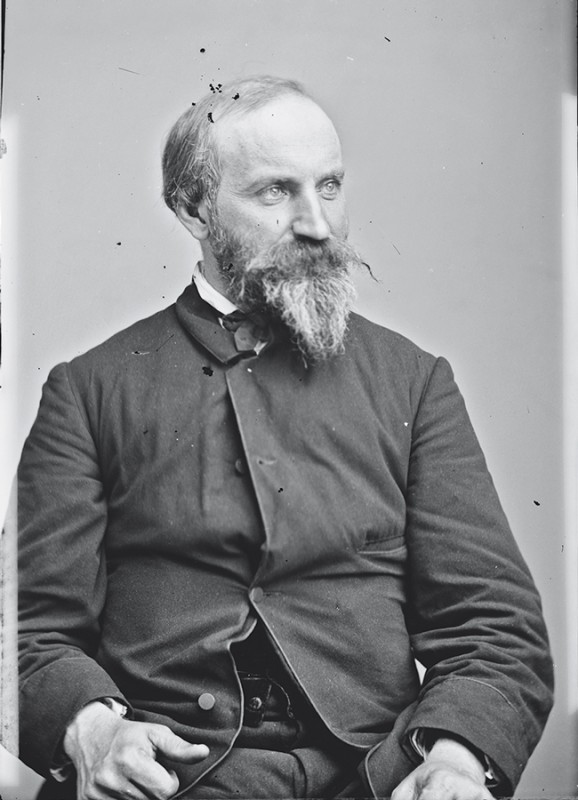
Caleb Lyon, ca. 1855–1865. (Brady-Handy Collection, Library of Congress.)
